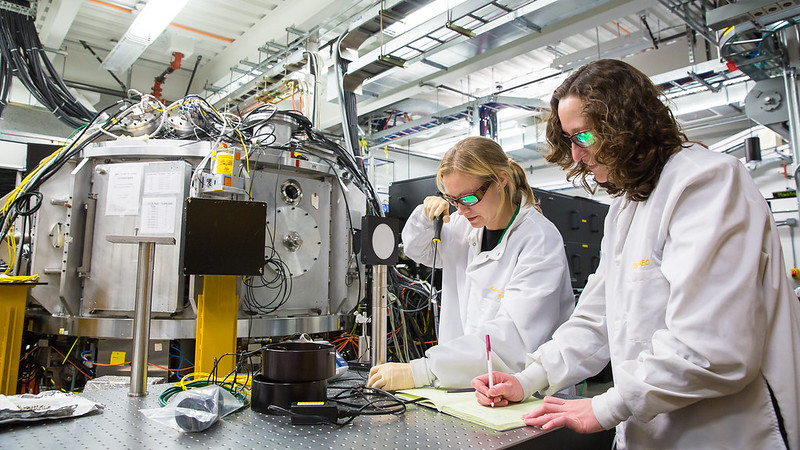Queen’s University Belfast researchers strike gold with physics discovery
Previously unknown properties of the precious metal gold and its melting point have been uncovered by an international team of scientists led by Queen’s University Belfast.

The metal has been demonstrated to react unexpectedly to extreme temperatures in a series of ground-breaking experiments – the first of their kind in the world.
Researchers used high-intensity lasers to heat gold to very high temperatures and observe the results at the atomic level. Contrary to all expectations, the metal stopped melting and actually became harder and stronger past a certain heat threshold. Ever-increasing amounts of energy (heat) were then required to bring the gold to melting point.
The lasers used are called ‘femtosecond’ lasers and operate on ultrafast timescales, with a femtosecond being one millionth of a billionth of a second. The scientists followed up the laser ‘hits’ by observing the changes using femtosecond-duration X-ray pulses.
This result had been predicted in theoretical simulations but it was never unambiguously observed before, partly because the femtosecond technology did not exist. While the discovery is in the realm of fundamental physics, it will have wide-ranging implications for technology and industry. In manufacturing in the aerospace and automotive industries, for example, laser technology is widely used to heat and machine hard metals for small, highly intricate and complex parts.
The researchers carried out their experiments using the highest-resolution X-ray machines available in the world. Only five research facilities exist globally with this kind of equipment and top researchers must compete for highly prized and restricted timeslots.
Dr Adrien Descamps and Dr Emma McBride, both from the School of Mathematics and Physics at Queen’s University Belfast, led a team from the UK, US, Germany and France. They availed of hi-spec facilities at the Linac Coherent Light Source, an X-ray Free Electron Laser at the SLAC National Accelerator Laboratory in California (where car manufacturer Rolls Royce recently carried out R&D).
Using the X-ray Free Electron Laser, the researchers exposed very thin sheets of gold – 1,000 times thinner than the thickness of a human hair – to the X-ray pulses. The sheets were soon perforated with tiny holes where the lasers cut through. But as the heat of the lasers was turned up, more and more energy was required to combat the hardening of the material in a phenomenon scientists have called ‘phonon hardening’.
Now physicists are wondering what other metals – ‘noble’, precious or otherwise – may react in similar ways. There are theoretical predictions that copper, platinum and aluminium will behave like gold when ‘excited’, but that other materials such as tantalum – used to make ‘superalloys’ for aeroplane engines; and tungsten – an important material in the construction of fusion reactors, which could become an important source of clean energy in the future, will respond differently. Experiments on any element other than gold have yet to be conducted – this was a world-first.
Lead author Dr Adrien Descamps explained the significance of this finding.
“Our study is like a bridge between theoretical physics and the real world. And while the simulations of the past may have posited that this effect might be possible, our experiment has provided hundreds of data points, giving an enormous amount of detail and evidence which was previously unavailable.
“You can only get this kind of detail at the atomic level – we were probing the timescale between before applying the laser and the material blowing up – which is a tiny fraction of a split-second. You can only really study that at pico-second scale – it happens too fast to see with the naked eye or in ‘real time’.”
Dr Emma McBride, a UKRI Future Leaders Fellow at Queen’s University, added: “It was such a privilege to use these highly specialised and expensive X-Ray machines and we are amazingly grateful for that opportunity. We wouldn’t have been able to carry out this experiment more than ten years ago – this kind of sophisticated machinery simply didn’t exist and we had no way of knowing how materials would respond to lasers at such intensity.
“By proving that phonon hardening is indeed real and can be evidenced, it will increase our understanding of how energy flows and how materials respond. This will be invaluable for the future of applied science and technology.”
The research is published in Science Advances.